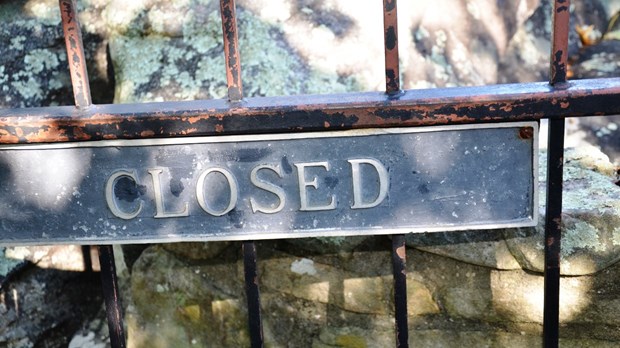
What are we going to do about all those struggling small churches?
That question has been the subject of endless hand-wringing in the last several decades. A lot of time and money has been invested in conversations, books, seminars and classes attempting to fix this problem.
Struggling small churches are usually given two options:
Option 1: Figure Out a Way to Grow the Church
There’s been more information about how to grow churches than any other subject on pastoral ministry in the last 30-40 years.
Strategies for growth have included everything from praying longer and working harder, to changing the music, the methods, the denomination and/or the pastor. But when all the hard work, fresh strategies and prayer meetings fail to produce the expected growth, we go to…
Option 2: Close the Church
Grow or close.
So many small church pastors have felt, or are currently feeling the pressure to do one or the other.
At times, that pressure seems to come from everywhere. From our congregations, our denominations and – perhaps the toughest critic of all – within ourselves. Many pastors reading this right now have not been able to pull off the expected growth and are wondering if they should call it quits.
If that’s you, don’t quit yet. I have some good news. ‘Grow it or close it’ aren’t your only choices. There’s a third option. And it’s not a weird new method, a mystical ancient secret or a positive thinking, pie-in-the-sky, hope-against-reality dream.
It’s been sitting in front of us all along, but a lot of us have been so obsessed with ‘grow it or close it’ we’ve overlooked this alternative.
Option 3: Help Struggling Small Churches Become Healthy Small Churches
We live in a culture that is so obsessed with a bigger-is-better mindset, that we’ve allowed it to creep into the body of Christ. It’s become such an automatic part of our thought process, that many people in ministry can’t even see this obvious third option for small, struggling churches.
Before I go any further, let me be clear about this. When I talk about church health, I don’t mean helping churches become healthy as a stepping-stone to becoming bigger – although it’s great if that happens, too. I mean becoming healthy as an end in itself.
The Healthy Church Alternative
So, 80 to 90 percent of the churches in the world are small. That’s not a new phenomenon. It’s been that way for 2,000 years. If the last 50-year push for growth hasn’t changed those percentages, it’s unlikely they’ll ever change.
But maybe that’s not a problem. Maybe those percentages haven’t changed because they’re not supposed to.
Maybe small churches aren’t bad. Maybe we don’t have a size problem as much as we have a health problem.
Imagine if every small church in the world became healthy, strong and vibrant (as many of them are already). Would being small matter any more?
Be Careful of Unintended Consequences
If the last 50-year push for individual church growth hasn’t done much to change the percentage of small churches to big ones, Option #1 (grow my church) isn’t likely to happen for the vast majority of churches – at least not past the dreaded 200 barrier (gotta say, I’m not a fan of that term).
Does that mean we’re stuck with Option #2? And if so, have we really considered what the unintended consequences of that might be? Are we prepared to say that we need to close 80 to 90 percent of the churches in the world?
Another unintended consequence of our size obsession is that many people in ministry don’t know a healthy small church when they see one.
Because of a common misunderstanding that ‘all healthy things grow’ means constant numerical increase, there are a lot of people in ministry who don’t think a healthy church will stay small for long. Numerical growth is inevitable, right? If so, any church that does stay small mustn’t be healthy.
With that underlying belief, it’s no wonder we haven’t developed adequate tools to help struggling small churches become healthy small churches. We don’t even think it’s possible!
The Essential First Step to Having a Healthy Small Church
We need to challenge our preconceptions about size and health, then assemble and promote the best ideas we can find to help struggling small churches become healthy small churches.
How do we do that? I begin to tackle that in my follow-up post, The Essential First Step to Having a Healthy Small Church.
Copyright © 2016 by the author or Christianity Today/Leadership Journal.
Click here to read our guidelines concerning reprint permissions.
Pivot is a part of CT's
Blog Forum. Support the work of CT.
Subscribe and get one year free.
The views of the blogger do not necessarily reflect those of Christianity Today.
Join in the conversation about this post on Facebook.
- A Discipleship Strategy Small Churches Can Actually Follow, with Darrell Stetler (Ep 38)Darrell and Karl talk about the importance of discipleship in the life of the church – and as a central role in our calling as pastors.
- Why Proximity and Longevity Matter in Pastoral Ministry, with Alan Briggs (Ep 36)Karl interviews Alan Briggs, a pastor, the author of Staying is the New Going, the host of the Right Side Up Leadership podcast and StayForth.com.
- Seculosity: Ministry In The Era Of Secular Religion, with David Zahl (Ep 37)Karl Vaters interviews David Zahl, author of Seculosity: How Career, Parenting, Technology, Food, Politics, and Romance Became Our New Religion and What to Do about It.
- Should You Start a Podcast? And Positive Ministry Trends, with Aron Utecht (Ep 35)Karl Vaters interviews Aron Utecht, a pastor and the host of the Good Ideas for Churches podcast















